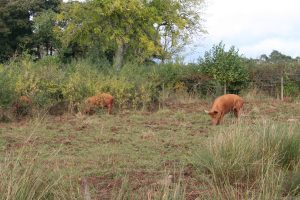4 Activity 1.4 – “Sounding and Feeling Off?”: Toxic Heritage Revisited
Audrey Ricke
Associated Readings:
Chapter 18, Rosemary Joyce, “Toxic and Wasted: Artists Thinking About How to Engage with Material Futures.
Chapter 2, Jonathan Gardner, “Of blaes and bings: The (Non)toxic heritage of the West Lothian Oil Shale Industry”
Targeted Skills:
Fieldwork, Creativity, Reflection, Analysis
Directions:
What does toxic heritage sound like? Identify a local toxic heritage site, material, or product. Record audio and/or video at or in the vicinity of the toxic heritage site or activity/area associated with the material/product. Then record the audio/or video of environmental-cultural heritage that you do not consider toxic heritage.
[Participants can choose to focus on another non-visual sensory experience as well, such as touch or smell. Be careful to avoid selecting a form of engagement that could cause an increased risk to your health.]
Analysis:

- Compare the two recordings. What are some key differences and similarities?
- What are some real-world applications that could come out of such comparisons? [e.g. public engagement, education, and trust; recognizing previously unidentified toxic heritage; environmental justice efforts, etc.]
Reflection:
- How did selecting the sites inform how you think about toxic heritage? How did it inform how you think about your community?
- What did hearing toxic heritage add to your understanding that was different than other senses?
- It is difficult to record, but how does your sense of smell (or another non-visual sense) play into your perception of toxic heritage?
Note: All recordings should be used for this activity only and not shared publically with others without permission and Institutional Review Board/Ethics board approval where applicable.
Activity Inspired by:
Hammond, Jay. 2023. “Recording an Ethnographic Soundscape”. In The Creative Ethnographer’s Notebook: A Transdisciplinary Roundtable and Workshop. American Anthropological Association Meetings, Toronto, CAN.

